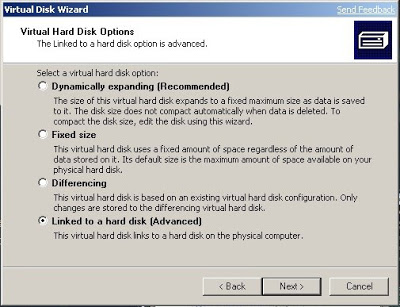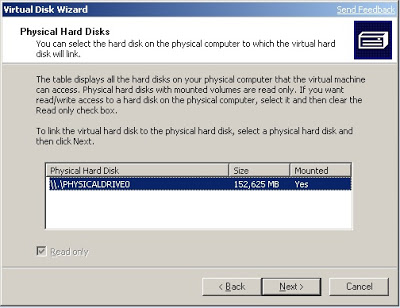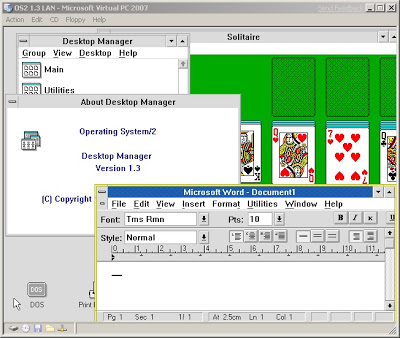Well I really thought I was going to make some headway on this.
But the answer was no.
However for the sake of completeness, let me at least document what I did.. The IBMPC hardware is initalized in hw/pc_piix.c
You’ll find this little GEM:
if (pci_enabled) {
PCIDevice *dev;
dev = pci_piix3_ide_init(pci_bus, hd, piix3_devfn + 1);
idebus[0] = qdev_get_child_bus(&dev->qdev, “ide.0”);
idebus[1] = qdev_get_child_bus(&dev->qdev, “ide.1”);
} else {
for(i = 0; i < MAX_IDE_BUS; i++) { ISADevice *dev; dev = isa_ide_init(ide_iobase[i], ide_iobase2[i], ide_irq[i], hd[MAX_IDE_DEVS * i], hd[MAX_IDE_DEVS * i + 1]); idebus[i] = qdev_get_child_bus(&dev->qdev, “ide.0”);
}
}
So I did the obvious thing and just wrapped it with a ‘pci_enabled=0;’ and a ‘pci_enabled=1’, basically turning off PCI for the IDE initialization so it’d load the isa_ide_init proc. Well that just then crashed Qemu when it was reconciling geometry for the NVRAM. 20 minutes with GDB and I figure that the code has morphed enough that it’s basically expecting 2 IDE controllers, and the ISA thing just isn’t building out what it wants so it’s just a quick fix in hw/pc.c
static void pc_cmos_init_late(void *opaque)
…
ide_get_bs(hd_table, arg->idebus0);
ide_get_bs(hd_table + 2, arg->idebus1);
So I comment out the second ide_get_bs and lo Qemu doesn’t crash anymore! But the BIOS says there is no hard disks?! So I’m figuring it’s a SeaBIOS issue, so checking their changelog, I see that there is something about not trusting ISA controllers on PCI systems.
So I’ll just have to back out that change, or just hack the thing to re-enable ISA IDE controllers. Luckily this was kind of easy to spot, as someone had left the magical words ‘isapc’ in ata.c
if (!CONFIG_COREBOOT && !pcicount) {
// No PCI devices found – probably a QEMU “-M isapc” machine.
// Try using ISA ports for ATA controllers.
init_controller(0, -1, IRQ_ATA1
, PORT_ATA1_CMD_BASE, PORT_ATA1_CTRL_BASE, 0);
init_controller(1, -1, IRQ_ATA2
, PORT_ATA2_CMD_BASE, PORT_ATA2_CTRL_BASE, 0);
}
So all I had to do was ensure that this was called, no matter what (comment out the if, leave the block). Sadly MinGW couldn’t build SeaBIOS so I spent the better part of an hour downloading Slackware 13.37 (which was … less then expected) fighting with it’s frame buffer, then the linker gave me this exciting bit.
cannot move location counter backwards (from 00000000000067e0 to 0000000000000000)
The fix is to apparently use binutils 2.20.51 . Slackware came with 2.21.51 .. Which apparently broke this needed function (again). So I wound up downloading the source from the MinGW project of all things (I know, wth?) having fun with p7zip (it installs a 7za?!) then I could FINALLY build my BIOS. First a generic test to make sure it works, then the modified one.
And into the crash. To verify I at least was doing what I thought, I turned on some debugging in the BIOS, which seamed normal, and then just fired up qemu with this flag:
-monitor telnet:127.0.0.1:2023,server,nowait
So I can telnet in, and capture the full device tree. Which you get with…
info qtree
And you can see, the IDE is indeed on the ISA bus.
bus: main-system-bus
type System
dev: hpet, id “”
gpio-in 1
dev-prop: timers = 3
dev-prop: msi = off
mmio fed00000/00000400
dev: i440FX-pcihost, id “”
bus: pci.0
type PCI
dev: PIIX4_PM, id “”
dev-prop: smb_io_base = 45312
bus-prop: addr = 01.3
bus-prop: romfile =
bus-prop: rombar = 1
bus-prop: multifunction = off
bus-prop: command_serr_enable = on
class Bridge, addr 00:01.3, pci id 8086:7113 (sub 1af4:1100)
bus: i2c
type I2C
dev: smbus-eeprom, id “”
bus-prop: address = 87
dev: smbus-eeprom, id “”
bus-prop: address = 86
dev: smbus-eeprom, id “”
bus-prop: address = 85
dev: smbus-eeprom, id “”
bus-prop: address = 84
dev: smbus-eeprom, id “”
bus-prop: address = 83
dev: smbus-eeprom, id “”
bus-prop: address = 82
dev: smbus-eeprom, id “”
bus-prop: address = 81
dev: smbus-eeprom, id “”
bus-prop: address = 80
dev: PIIX3, id “”
bus-prop: addr = 01.0
bus-prop: romfile =
bus-prop: rombar = 1
bus-prop: multifunction = on
bus-prop: command_serr_enable = on
class ISA bridge, addr 00:01.0, pci id 8086:7000 (sub 1af4:1100)
bus: isa.0
type ISA
dev: isa-ide, id “”
dev-prop: iobase = 0x170
dev-prop: iobase2 = 0x376
dev-prop: irq = 15
isa irq 15
bus: ide.0
type IDE
dev: ide-drive, id “”
dev-prop: unit = 0
dev-prop: drive = ide1-cd0
dev-prop: logical_block_size = 512
dev-prop: physical_block_size = 512
dev-prop: min_io_size = 0
dev-prop: opt_io_size = 0
dev-prop: bootindex = -1
dev-prop: discard_granularity = 0
dev-prop: ver = “0.14.0”
dev-prop: serial = “QM00003”
dev: isa-ide, id “”
dev-prop: iobase = 0x1f0
dev-prop: iobase2 = 0x3f6
dev-prop: irq = 14
isa irq 14
bus: ide.0
type IDE
dev: ide-drive, id “”
dev-prop: unit = 0
dev-prop: drive = ide0-hd0
dev-prop: logical_block_size = 512
dev-prop: physical_block_size = 512
dev-prop: min_io_size = 0
dev-prop: opt_io_size = 0
dev-prop: bootindex = -1
dev-prop: discard_granularity = 0
dev-prop: ver = “0.14.0”
dev-prop: serial = “QM00001”
dev: isa-fdc, id “”
dev-prop: driveA = floppy0
dev-prop: driveB =
dev-prop: bootindexA = -1
dev-prop: bootindexB = -1
isa irq 6
dev: port92, id “”
dev: i8042, id “”
isa irqs 1,12
dev: isa-parallel, id “”
dev-prop: index = 0
dev-prop: iobase = 0x378
dev-prop: irq = 7
dev-prop: chardev = parallel0
isa irq 7
dev: isa-serial, id “”
dev-prop: index = 0
dev-prop: iobase = 0x3f8
dev-prop: irq = 4
dev-prop: chardev = serial0
isa irq 4
dev: mc146818rtc, id “”
dev-prop: base_year = 2000
dev: i440FX, id “”
bus-prop: addr = 00.0
bus-prop: romfile =
bus-prop: rombar = 1
bus-prop: multifunction = off
bus-prop: command_serr_enable = on
class Host bridge, addr 00:00.0, pci id 8086:1237 (sub 1af4:1100)
dev: ioapic, id “”
gpio-in 24
mmio fec00000/00001000
dev: fw_cfg, id “”
dev-prop: ctl_iobase = 0x510
dev-prop: data_iobase = 0x511
mmio ffffffff/00000002
mmio ffffffff/00000002
dev: apic, id “”
dev-prop: id = 0
mmio fee00000/00100000
So while it didn’t do what I wanted, this kind of was a good way to see that I could at least enable ISA IDE hard disks on Qemu.
I can only wonder why on earth they are still broken with regards to Netware.




